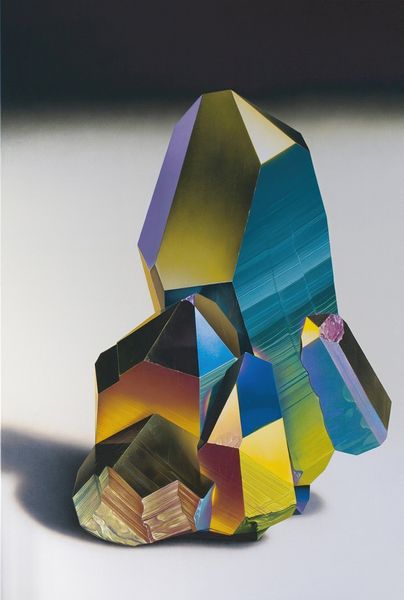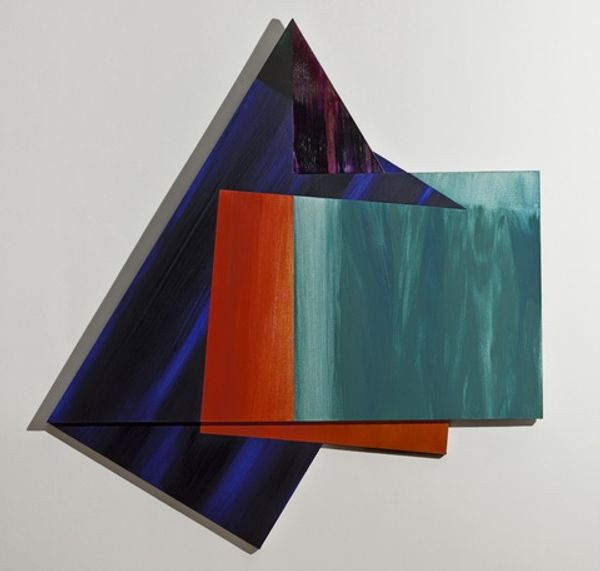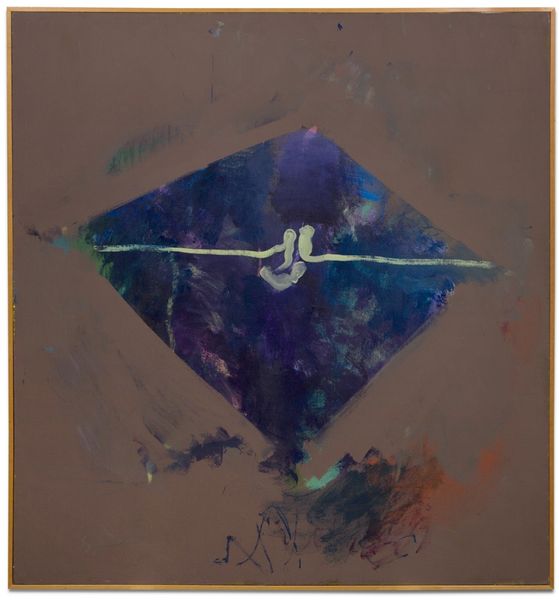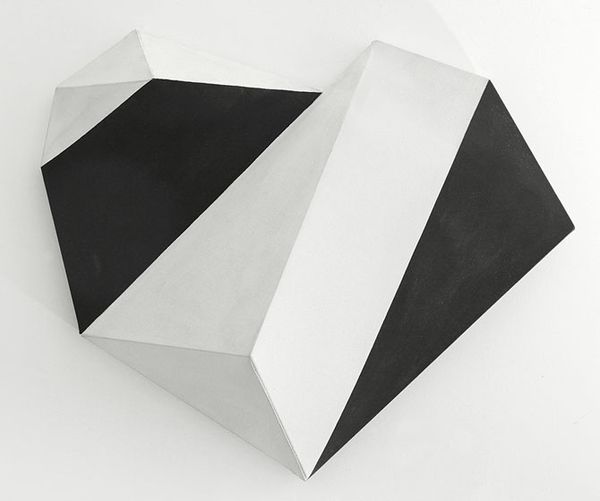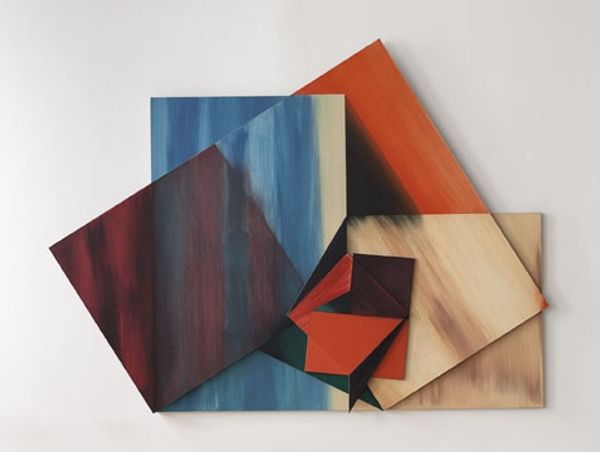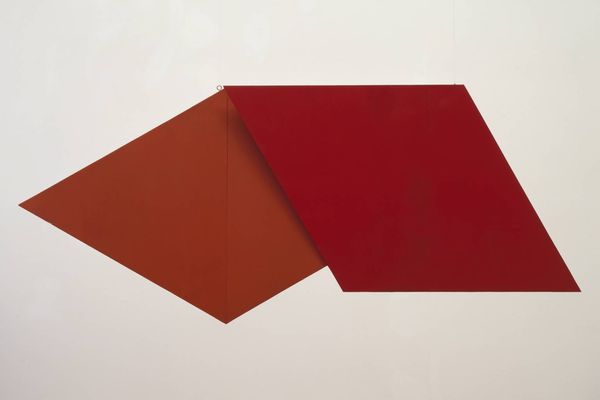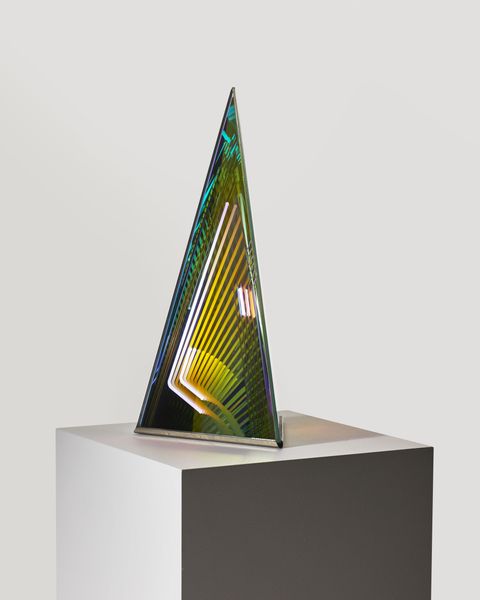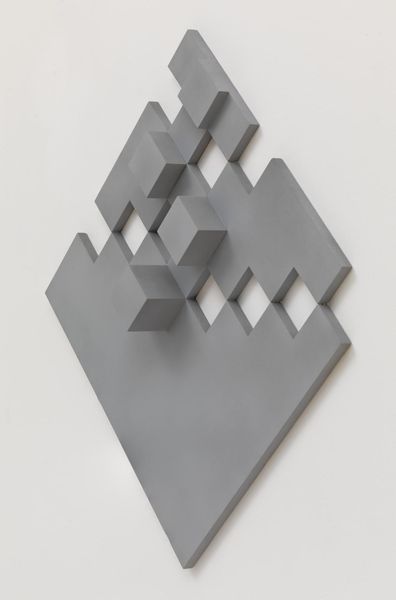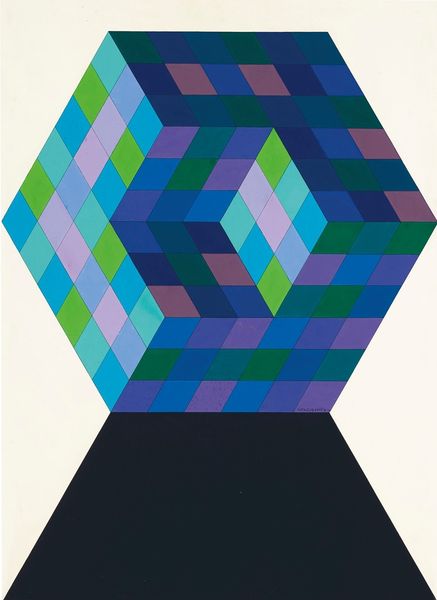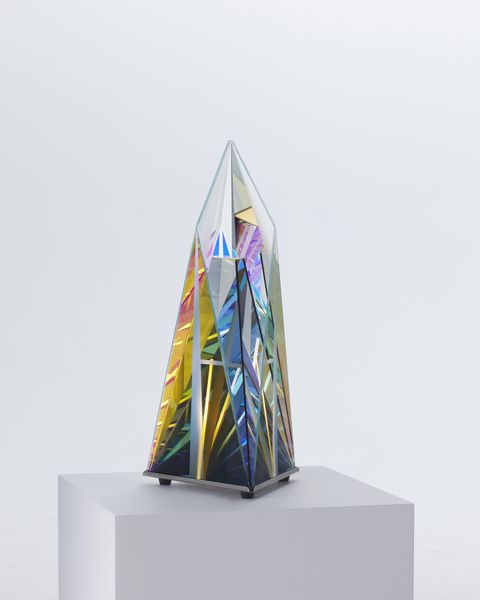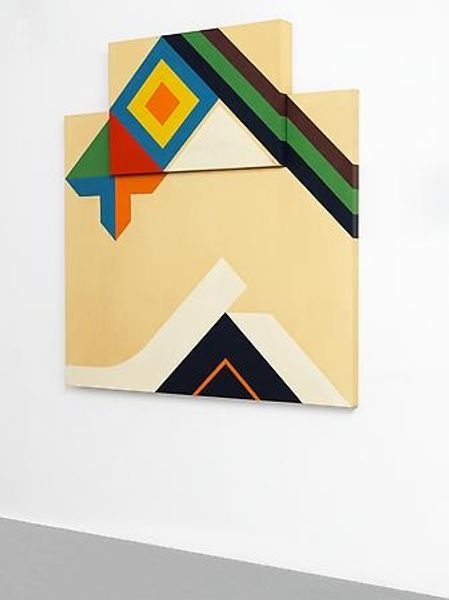
#
pop art-esque
#
tropical
#
colourful
#
pop of colour
#
bright colours popping
#
pop of colours
#
bright colours
#
centre of bright colour
#
artificial colours
#
nature closeup
Copyright: Dorothea Rockburne,Fair Use
Editor: Here we have Dorothea Rockburne's "Radiance" from 1982, a geometric work comprised of triangles in deep blue, sunny yellow, and muted red. It feels like a paper sculpture, so precisely folded, almost mathematically designed, although it does look like paint. What do you make of this piece? Curator: What interests me is how Rockburne blurs the lines between painting and sculpture, almost proposing a "third thing." Instead of illusionistic space on a canvas, or freestanding form, we have a material object, fabricated, not unlike mass-produced goods. Look closely—is that actually hand-applied pigment, or some industrial printing process, some kind of laminate? Editor: It's hard to tell without getting closer, isn't it? So the "radiance" of the title could be less about inherent light and more about manufactured shine? Curator: Exactly! And the choice of color becomes critical here. What is she saying about these hues and their relationship to both fine art and commercial aesthetics? Is it a critique of art’s remove from everyday labor and the rise of artificiality? Editor: I never considered it in that light – I always thought of geometric abstraction as very high-art. The idea that it could be related to manufacturing and consumerism gives me a lot to think about. Curator: Yes. What we're seeing is not merely an abstract form but a statement on how art is made and how we perceive its value in a society saturated with mass production. The folding itself, a labor, points to a crucial aspect: a challenge of the artistic authorship in its purest form. Editor: I see! Thanks – this reframing helps me understand the context behind such a simple and complex piece of artwork!
Comments
No comments
Be the first to comment and join the conversation on the ultimate creative platform.
